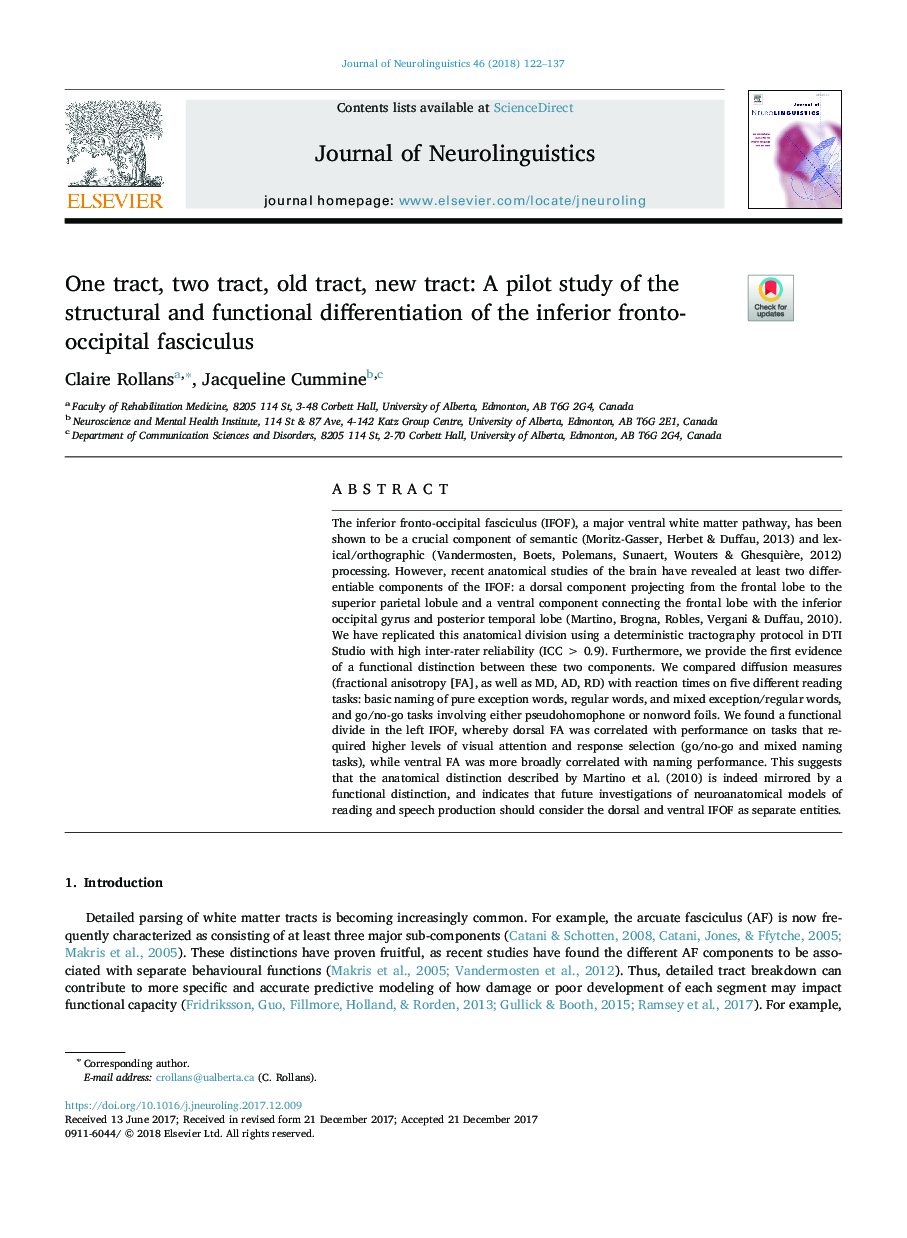| Article ID | Journal | Published Year | Pages | File Type |
|---|---|---|---|---|
| 7268765 | Journal of Neurolinguistics | 2018 | 16 Pages |
Abstract
The inferior fronto-occipital fasciculus (IFOF), a major ventral white matter pathway, has been shown to be a crucial component of semantic (Moritz-Gasser, Herbet & Duffau, 2013) and lexical/orthographic (Vandermosten, Boets, Polemans, Sunaert, Wouters & Ghesquière, 2012) processing. However, recent anatomical studies of the brain have revealed at least two differentiable components of the IFOF: a dorsal component projecting from the frontal lobe to the superior parietal lobule and a ventral component connecting the frontal lobe with the inferior occipital gyrus and posterior temporal lobe (Martino, Brogna, Robles, Vergani & Duffau, 2010). We have replicated this anatomical division using a deterministic tractography protocol in DTI Studio with high inter-rater reliability (ICCâ¯>â¯0.9). Furthermore, we provide the first evidence of a functional distinction between these two components. We compared diffusion measures (fractional anisotropy [FA], as well as MD, AD, RD) with reaction times on five different reading tasks: basic naming of pure exception words, regular words, and mixed exception/regular words, and go/no-go tasks involving either pseudohomophone or nonword foils. We found a functional divide in the left IFOF, whereby dorsal FA was correlated with performance on tasks that required higher levels of visual attention and response selection (go/no-go and mixed naming tasks), while ventral FA was more broadly correlated with naming performance. This suggests that the anatomical distinction described by Martino et al. (2010) is indeed mirrored by a functional distinction, and indicates that future investigations of neuroanatomical models of reading and speech production should consider the dorsal and ventral IFOF as separate entities.
Related Topics
Life Sciences
Neuroscience
Cognitive Neuroscience
Authors
Claire Rollans, Jacqueline Cummine,
